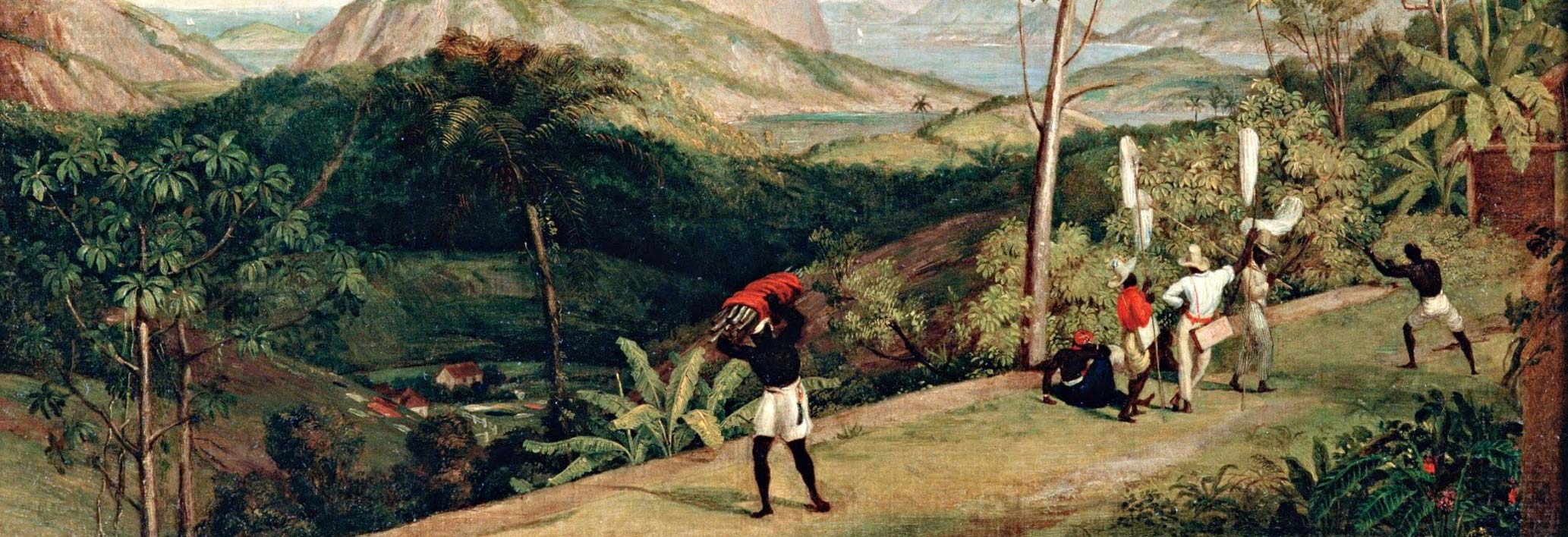Elizabeth Frazer Skelton was born at Bangalan Town on the Pongo River in present-day Guinea/Conakry to John Frazer, a Scottish trader, and Phenda, an African widow. Born in Inverness, Scotland, John Frazer worked as a merchant for Glasgow- and Liverpool-based trading firms, and eventually ended up in the Pongo River region sometime in the 1790s. Frazer maintained a slave-trading establishment at Bangalan on the upper Pongo River, meeting and marrying Phenda, the widow of Thomas Hughes Jackson (another European trader) in 1799 at Isle de Los. John and Phenda had five children together including Elizabeth. Elizabeth, along with her sisters Eleanor and Mary Ann, were baptized and attended a school established by the Church Missionary Society at Bashia on the Pongo River.
While leaving Phenda in charge of the trading hub at Bangalan, Frazer also maintained residences in Liverpool and Charleston, South Carolina. Frazer moved to Charleston to expand his trading business in 1807, eventually settling in Spanish Florida following the United States’ ban on the importation of African slaves in 1808. In December 1813, he drowned in Florida, regarded at the time of his death at one of the wealthiest men in Florida due to his ownership of two plantations and nearly four-hundred slaves, in addition to his properties in South Carolina, Britain, and West Africa. Frazer left his fortune to his children, leaving Andrew Charles and Thomas Napier as executors of his estate and guardians of his children. Although their inheritance made each of the Frazer children very wealthy in their own rights, problems with delivering the inheritance meant that it would be decades before Elizabeth, the only surviving child, received her inheritance.
As the struggle to secure the family inheritance continued, Elizabeth set out to travel, following her siblings James and Margaret to England, living in Liverpool for four years with Thomas Powell, her father’s former agent. She also traveled to France where she studied French, resulting in a fluency in that language, along with English and several African languages. Following her return to Guinea/Conakry, Elizabeth met and married William Skelton, Jr., a trader, on July 24, 1826 at Kissing on the Pongo River. William came from a similar background as Elizabeth. He was the son of an English trader who operated a slave factory at Kissing and an African mother. Before marrying Elizabeth, William had participated in the Trans-Atlantic slave trade before returning to the Pongo River region to apprentice under a local Dutch businessman. Records show that Elizabeth and William had at least two children, Mary Anne and Emma.
Together with her husband, Elizabeth established a successful trading company at Victoria, near the mouth of the Nunez River, which operated from 1826 to 1846. Victoria represented the port of entry from oceangoing vessels traveling inward via the river. And Elizabeth, with her mastery of multiple languages and experience in European customs, used her skills to facilitate trade and diplomacy with incoming ships. She forged partnerships with powerful Euro-African families through her dealings in business and facilitated the marriage of her children to several of these families. Following the death of her husband in 1843, Elizabeth also entered into a strategic marriage with John Bicaise, a Trinidadian migrant and leading trader in the region who represented French trading interests on Goree Island. While Elizabeth and her husband(s) certainly engaged in legitimate business pursuits, it is widely understood and accepted that they also traded in slaves, following the example led by her father John.
Elizabeth’s sister Mary Ann also proved an astute businesswoman in partnership with her husband Thomas Gaffery Curtis, another merchant of mixed race. From the time of their father’s death in 1813 to the time of Mary Ann’s death in 1846 (Eleanor had passed much earlier in the 1820s), Elizabeth continued to fight to gain her father’s full inheritance. By the time the fortune was disentangled from the British, Spanish, American, and African bureaucracies at play, Elizabeth inherited a significant fortune in land and monies, allowing her to further grow her business interests. Although it is unclear when Elizabeth passed, but records show that her husband, John Bicaise, remained active in the region as late as 1880.
Read the full, original biography by Bruce L. Mouser in The Dictionary of African Biography
Online Resources
“Continuing British Interest in Coastal Guinea-Conakry and Fuuta-Jaloo Highlands (1750 to 1850)”: https://www.semanticafrica.net/american-initiative
Bibliography
Brooks, George E. Jr. Yankee Traders, Old Coasters, and African Middlemen: A History of America Legitimate Trade with West Africa in the Nineteenth Century. Boston: Boston University Press, 1970.
mouser, bruce l. "Skelton, Elizabeth Frazer." Dictionary of African Biography, edited by Ed. Louis Gates Jr.. , edited by and Emmanuel K. Akyeampong. . Oxford African American Studies Center, http://www.oxfordaasc.com/article/opr/t338/e1907 (accessed Thu Sep 05 11:03:31 EDT 2019).
Mouser, Bruce L., “Women Slavers of Guinea-Conakry.” In Women and Slavery in Africa, edited by Claire C. Robertson and Martin A. Klein, pp. 320–39. Madison: University of Wisconsin Press, 1983.
Rodney, Walter. A History of the Upper Guinea Coast, 1545—1800. Oxford,: Oxford University Press, 1970.
Schafer, Daniel L. “Family ties that bind: Anglo-African slave traders in Africa and Florida, John Fraser and his descendants.” Slavery and Abolition 20, no. 3 (1999): 1-21.
Author
Bruce L. Mouser
Adapted by
Elizabeth Timbs and David Glovsky
Contributing Institutions
Hutchins Center for African & African American Research, Harvard University, Cambridge, MA.
Oxford University Press (USA) African American Studies Center.






